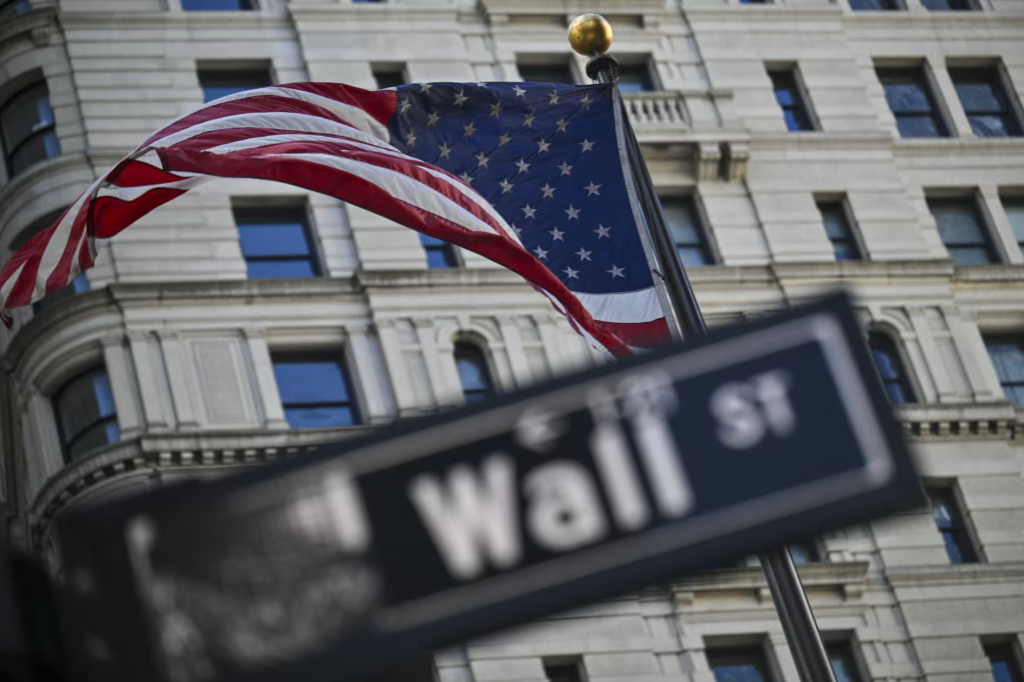U.S. stock futures fell Sunday after another rough week on Wall Street, and as China threatened to retaliate against countries that cooperate with U.S. trade restrictions.

Accusing the U.S. of “unilateral bullying,” China’s Ministry of Commerce said “China firmly opposes any party reaching a deal at the expense of China’s interests. If this happens, China will not accept it and will resolutely take reciprocal countermeasures.” The Trump administration is planning to pressure its trade partners to reduce trade with China in exchange for tariff relief, the Wall Street Journal reported last week.
Dow Jones Industrial Average futures ↑ YM00 +1.01% sank about 380 points, or 1% byaround 11 p.m. Eastern on Sunday.S&P 500 futures ↑ ES00 +1.30% and Nasdag-100futures 个 NQ00 +1.42% were also down around 1%. The price of West TexasIntermediate crude ↑ CL.1 +1.78% fell more than 1.8% to $63.55 a barrel, while gold↓ GC00 -0.84%rose 2% to $3,395.50. Bitcoin ↑ BTCUSD +1.22%rallied to $87,287while the U.s. Dollar Index ↑ DXY +0.15% fell 1%.
Stocks were mixed on Thursday, but all three major U.S. indexes logged weekly losses forthe third time in the past four weeks. The Dow ↑ DJA +2.66% ended last week off 2.7%while the S&P 500 ↑ $PX +2.51% dipped 1.5% and the Nasdag Composite个 COMP +2.71% slid 2.6%. The stock market was closed for the Good Friday holiday.
On Thursday, the Dow entered a “death cross” for the frst time since November 2023, asits 50-day moving average crossed below its 200-day moving average. While potentiallysignifying a more serious downward trend, historical data shows that the Dow’sperformance after a“death cross” has been consistently positive.
Investors are still worried about the potential effects of stiff tariffs against America’strading partners that the Trump administration imposed- then largely paused – earlierthis month. Trade negotiations are said to be underway with China – which is facing145% tariffs-Japan, the European Union and Mexico.
Read more: lnvestors are eager for tariff deals. They might get more tumult in bonds andstocks instead.
In a note Sunday, Stephen Innes, managing partner at SPl Asset Management, calledTrump’s tariff plan “a seismic wave that’s about to roll through the global economy.
“And make no mistake, there’s a cost to all this,” he wrote.”Even if deals start rolling in, thereputational hit to the U.S. brand is real. Policy predictability is shot. Trade partners willrethink exposure. lnvestors will build in a U.S. political volatility premium that didn’t existbefore. You don’t take a sledgehammer to the global trade architecture and expecteveryone to forget it six months later.
There are also increasing fears that President Donald Trump may try to fire Fed Chair Jerome Powell, after Trump increased his criticism of Powell last week and called for interest rates to be cut.
Trump’s comments came after Powell said Wednesday that Trump’s tariffs will likely cause higher inflation and slower economic growth.
Chicago Federal Reserve President Austan Goolsbee said Sunday that U.S. economic activity could take a dive this summer, following “artificially high” spring readings as businesses and consumers stock up on “preemptive purchasing” before the tariffs take effect.
Investors are also looking forward to quarterly earnings this week from Google parentAlphabet Inc.↑ GO0G +2.70% ↑ GOOGL +2.57%, Tesla Inc. ↑ TSLA +4.60% andBoeing Co.↑ BA +2.00%.
Reprinted from Al Jazeera

